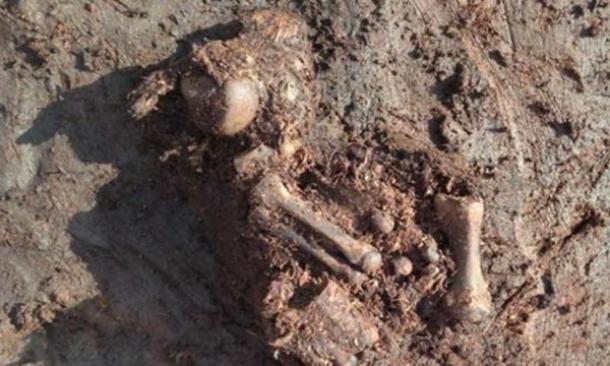
Archaeologists in Ireland made an amazing discovery this week when they unearthed another ancient bog body in County Meath, adding to the collection of ancient human remains, some incredibly well- preserved, which have been pulled from the bog. Studies on previous Iron Age bog bodies have shown evidence of sacrifice, and the latest discovery may be yet another victim.
According to the Irish Times, the human remains, which consist of adult leg and foot bones and flesh, were found by Bord Na Móna workers at Rossan Bog close to the Westmeath border in Co Meath on Saturday. The finding was made close to where another bog body, now known as ‘Moydrum Man’, was found in December 2012, which was dated to between 700 and 400 BC. Most bog bodies date back to between 2,000 and 4,000 years old.
National Museum of Ireland Director Raghnall Ó Floinn welcomed the new discovery and said, “every new find helps to bring us closer to understanding the lives and belief systems of our ancestors.”
Bog bodies provide an incredible window into our ancient past. The remains are usually extremely well-preserved thanks to the acidic, oxygen-free conditions in the peat bogs, which keeps organic material intact. One of the more phenomenal discoveries was Tollund Man, a 4th century man found in Denmark, whose face is as preserved as the day he died. The look upon his face is calm and peaceful, as though looking upon a sleeping man. Like many others, Tollund Man had been sacrificed as part of an Iron Age ritual. The well-preserved face of Tollund Man The well-preserved face of Tollund Man. Image source: Wikipedia
Over the past centuries, the remains of more than 500 men, women, and children have been unearthed during peat cutting activities in north-western Europe, especially in Ireland, Great Britain, the Netherlands, northern Germany, and Denmark. The majority date back to between 800 BC and 200 AD. No one knows for sure who these people were and how they ended up in the bogs, but it seems that most bodies are not just the remains of unlucky people who fell in after losing their way as many of them display signs of violent deaths.
Funerary customs of the time and region involved cremation of the bodies, so the fact that some were found intentionally placed in the peat bog, and were often accompanied by votive items, suggest that these were not normal burials and may indicate sacrifice. For instance, Tollund Man was found with a noose still around his neck but with no other injuries and it appears he had been carefully placed in the bog – his eyes and mouth had been closed and his body placed in a sleeping position – something that wouldn’t have happened if he were a common criminal.
Archaeologists have acknowledged that, while research provides new insights into bog bodies, there are still many more questions than answers. As Lotte Hedeager, an expert in Iron Age archaeology at the University of Oslo in Norway, said: "We will never be able to uncover the perception of life and death of those individuals 2,000 years ago. That remains a true secret of the bogs." Experts from the National Museum of Ireland are currently undertaking radiocarbon dating and other testing of the newly discovered remains to determine its age and other characteristics of the individual. Featured image: Photo issued by the National Museum of Ireland of a bog body which archaeologists at the National Museum of Ireland dug up in Rossan bog in Meath, close to the border with Westmeath.
Photograph: National Museum of Ireland
By April Holloway -
See more at: http://www.ancient-origins.net/news-history-archaeology/ancient-bog-body-found-ireland-may-be-iron-age-sacrifice-002080#sthash.HQK1IiLJ.dpuf
-Ancient Origins -




0 Comentarios